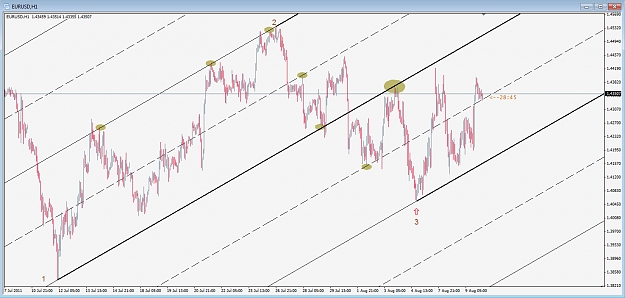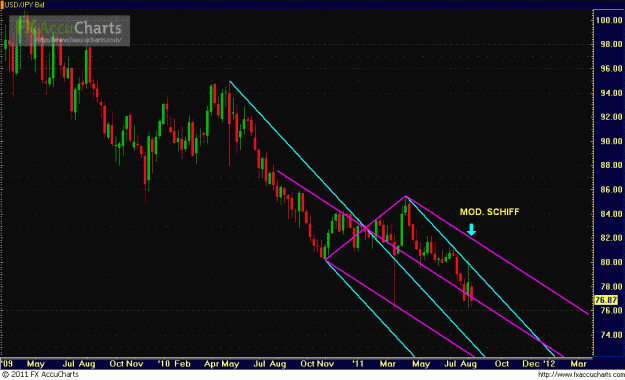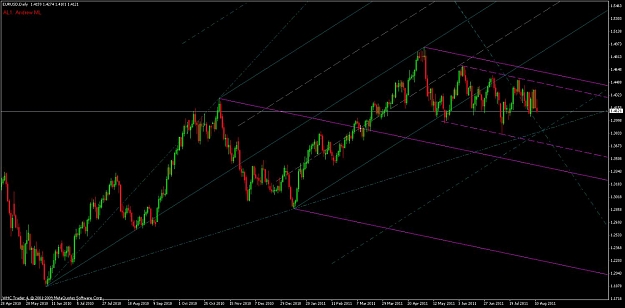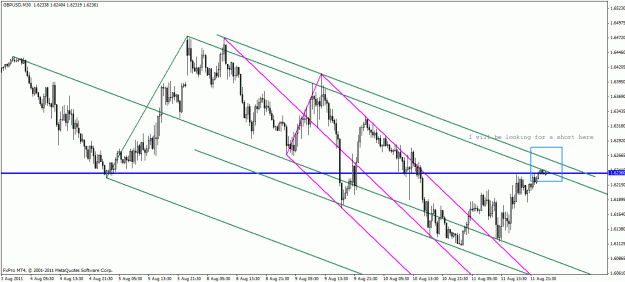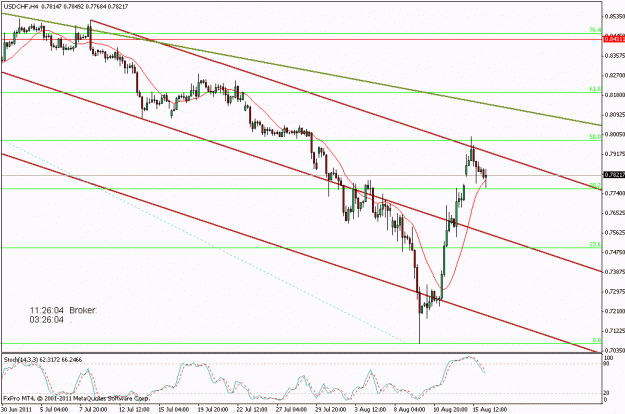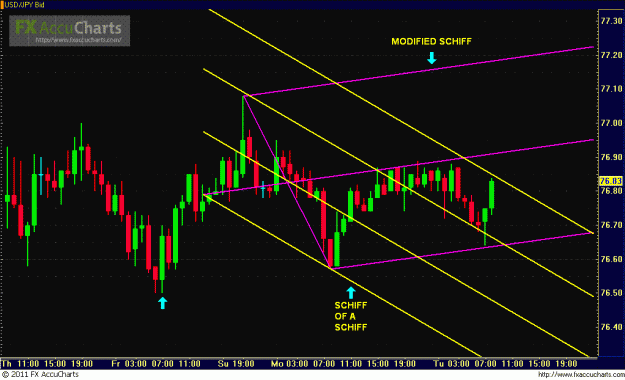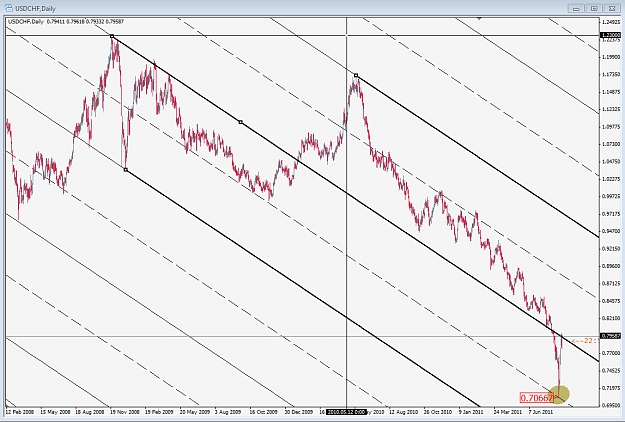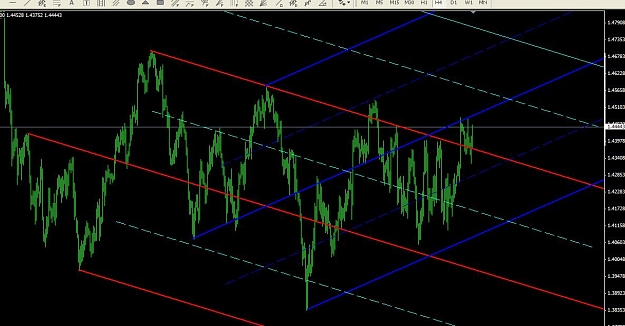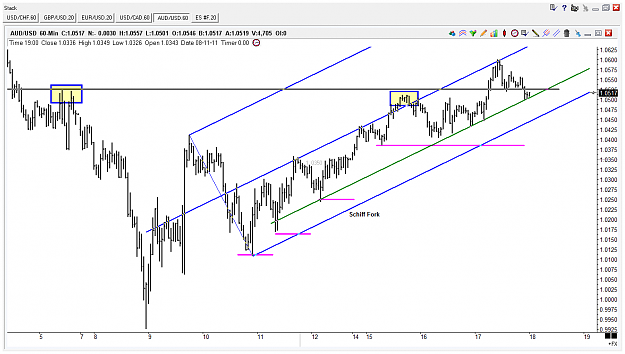DislikedQuestion: Is it possible to predict (with high probability) pivot C of a pitchfork using the positions of pivots A and B?Ignored
Examine your charts for good PF's that ultimately did work out well. Notice that it can often be observed that what turns out to be a good PF going forward in time ALSO has good "pre-fork" resonance on the chart as well. That is, when the final pivot C (or 3) is formed, one can see that there is resonance backwards in time from that final pivot. This can be evidence that the final pivot has in fact formed and will hold for at least a significant bounce if not a complete reversal or major pullback.
Take the first EU H1 chart for example. Draw the first two pivots as given here for the black Andrews fork, and then shift the 3rd pivot both UP and DOWN from where the final 3rd pivot ultimately did form. You will see that for the most part, the best pre-fork resonance of the Andrews fork occurred exactly as the 3rd pivot occurred. There was also some decent resonance within 10-15 pips lower than the actual pivot "3" as well, so how might we predict if it was exactly finished or not??
Check out the 2nd EU H1 chart. The blue Andrews fork was formed, then price rose an stopped just shy of the blue ML, and then fell to the blue LML where it bounced near perfectly. This point where it bounced is exactly the 3rd point that gives good resonance on the black Andrews fork. So, you have a new fork with good pre-fork resonance, AND, it occurs at a re-test of the LML of another larger Andrews fork. That is good confluence, and ultimately price quickly rose 360+ pips, almost to the black ML.
Study the 2nd EU H1 chart further. Did the blue Andrews fork have good pre-fork resonance when it's 3rd pivot was formed?? No, not really. However, this is a good example of another related test for pre-fork resonance which is in fact to draw the Mod. Schiff fork (and sometimes regular Schiff too). I have marked a few places where the Mod.Schiff fork had good pre-fork resonance that could ultimately have given some evidence that a bottom point "3" (blue Andrews) was in place and would later prove to hold as a significant pivot. Objectively though, it has to be said that for the blue Andrews fork, the pre-fork resonance was non-existent, and the Mod.Schiff resonance wasn't very convincing or helpful for that particular fork. As I shifted the blue fork further down, I saw what looked to me like what would have been better pre-fork resonance, yet price never reached a lower level.
That said, further study of pre-fork resonance is worthwhile in my opinion, exactly because it *may* help improve the probabilities that a good final pivot C (or "3") has formed, and can be traded accordingly.
